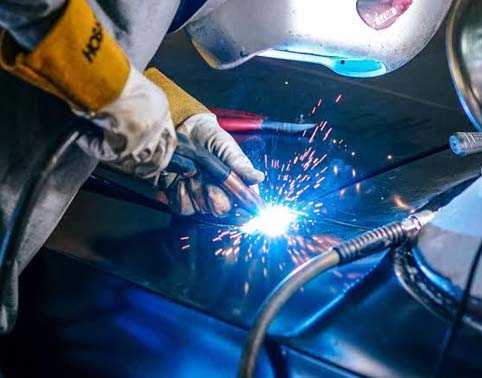Manufacturing
Brazing
Creating a niche in brazing with
superior quality and finish
Brazing is a variant of the joining process that allows two different components to combine without melting either of the base materials. It is a versatile process suited for producing permanent, mechanically stable, and leak-proof joints.
The Process
The Brazing process is simple and comprises four critical steps:
- The surfaces to be joined are cleaned to free them of all contaminants.
- The surfaces of the base materials are coated with a material called flux, which is used to remove residual contaminants on the surfaces to be joined and prevent oxidation.
- The joint area is heated to melt the flux. The molten flux’s chemical reactivity cleans the substrate and prevents further oxidation by retaining its liquid form.
- The filler metal is melted between the substrate’s surfaces. This causes displacement of the flux, wetting of the surfaces, and formation of the braze joint.

The brazing process is easily automated and can be carried out in minutes — it’s quick and reproducible.
The Advantages
- Maintains the composition of base materials that are joined
- Minimizes thermal distortions and heat-induced stresses
- Provides a simple means for bonding large joint areas or long joint lengths
- Allows for congregation of a large variety of thickness — assemblies composed of thin-to-thin and thin-to-thick structural components

Torch Brazing
We employ state-of-the-art torch brazing for producing consistent, high-quality connections. Our advanced manufacturing team uses hot gas torches on or near the joint to heat the workpieces and melt the filler alloy used in filling the gap. Owing to the nature of the process, it is an ideal fit for small production volumes, specialized operations, and hard-to-reach applications that require manual touch.


